California drought | Working to save ranching in the Owens Valley
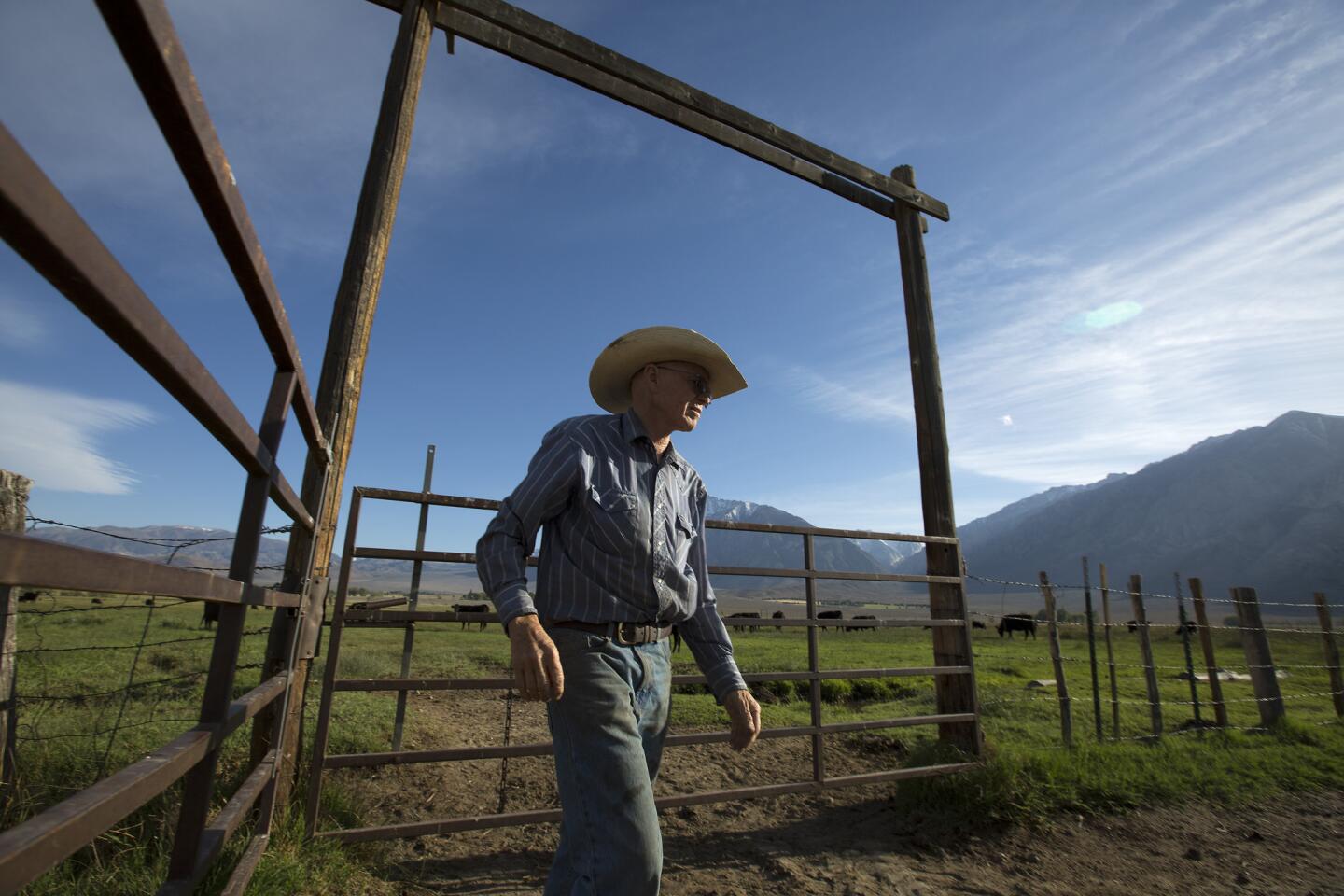
Bill Talbot on his family’s leased ranch land near Bishop. The DWP announced plans last month to slash irrigation allotments for half of Inyo County’s 50 ranches. The utility said the cuts are necessary because of the extremely low Sierra snowpack.
(Brian van der Brug / Los Angeles Times)In the Owens Valley, environmental activists and ranchers have buried decades of enmity to work together on a plan to save ranch land -- at the expense of hard-fought environmental protections
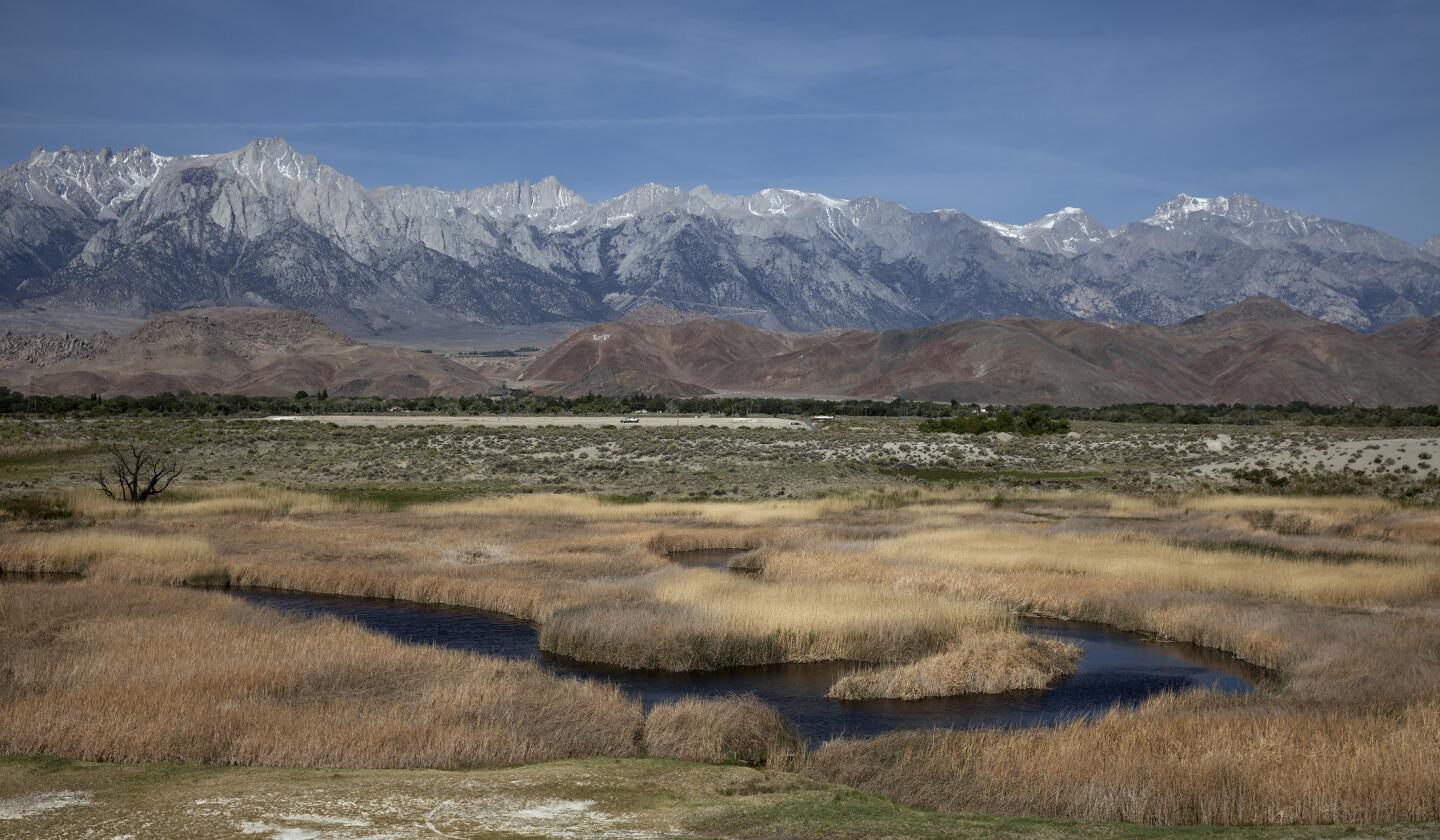
The Lower Owens River winds through the Owens Valley near Lone Pine.
(Brian van der Brug / Los Angeles Times)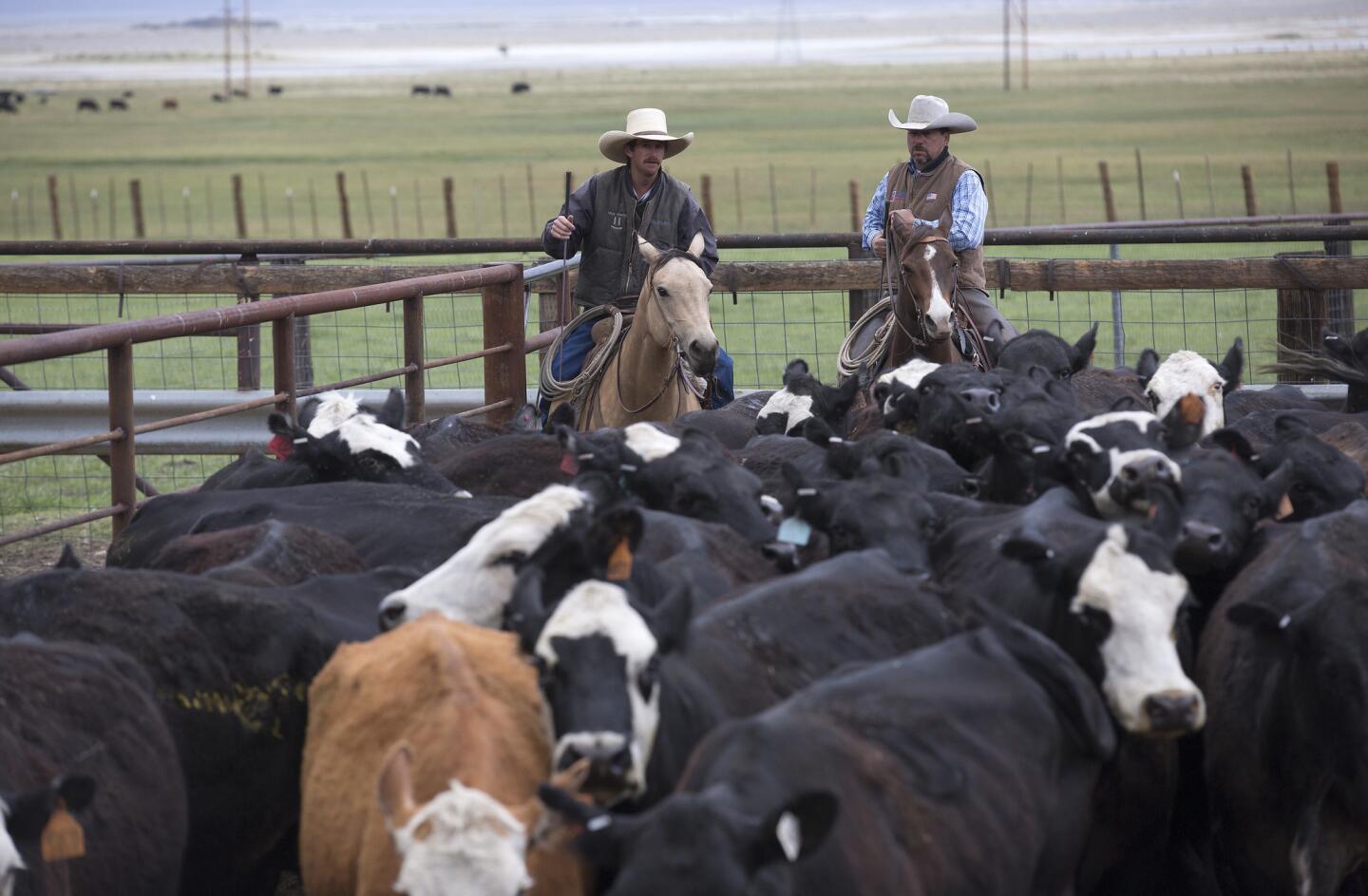
Mark Lacey, right, and Kyler Hanson count cattle as they move them toward a waiting truck in Olancha. Lacey, who leases 33,000 acres from the DWP in Owens Valley, is among several ranch owners reducing their herds by sending cattle to Idaho, Wyoming and Nebraska.
(Brian van der Brug / Los Angeles Times)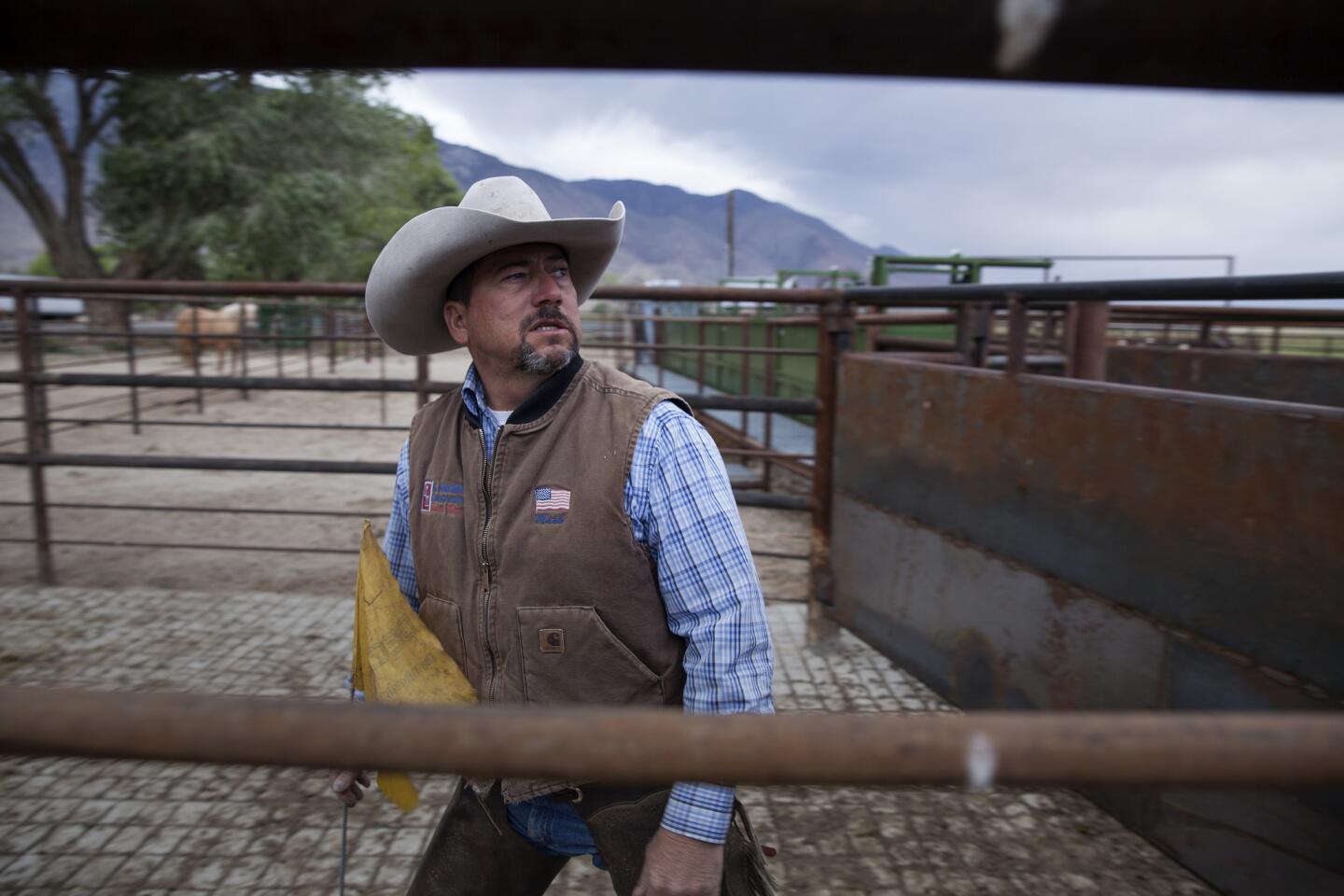
Cattleman Mark Lacey walks through a cattle pen while moving cows on ranch land in Olancha.
(Brian van der Brug / Los Angeles Times)Advertisement
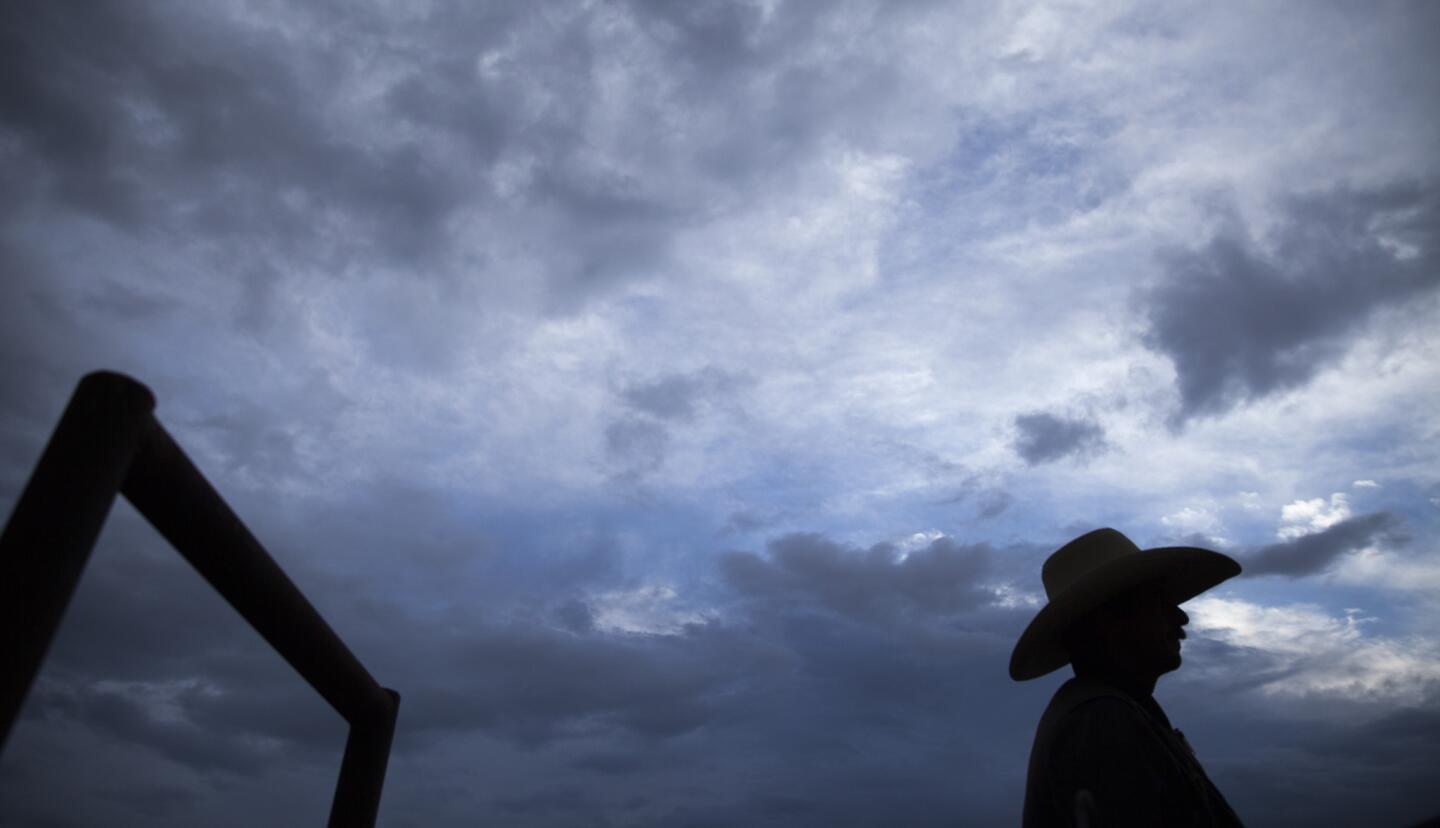
Cowboy Kyler Hanson waits to move cattle on ranch land in Olancha.
(Brian van der Brug / Los Angeles Times)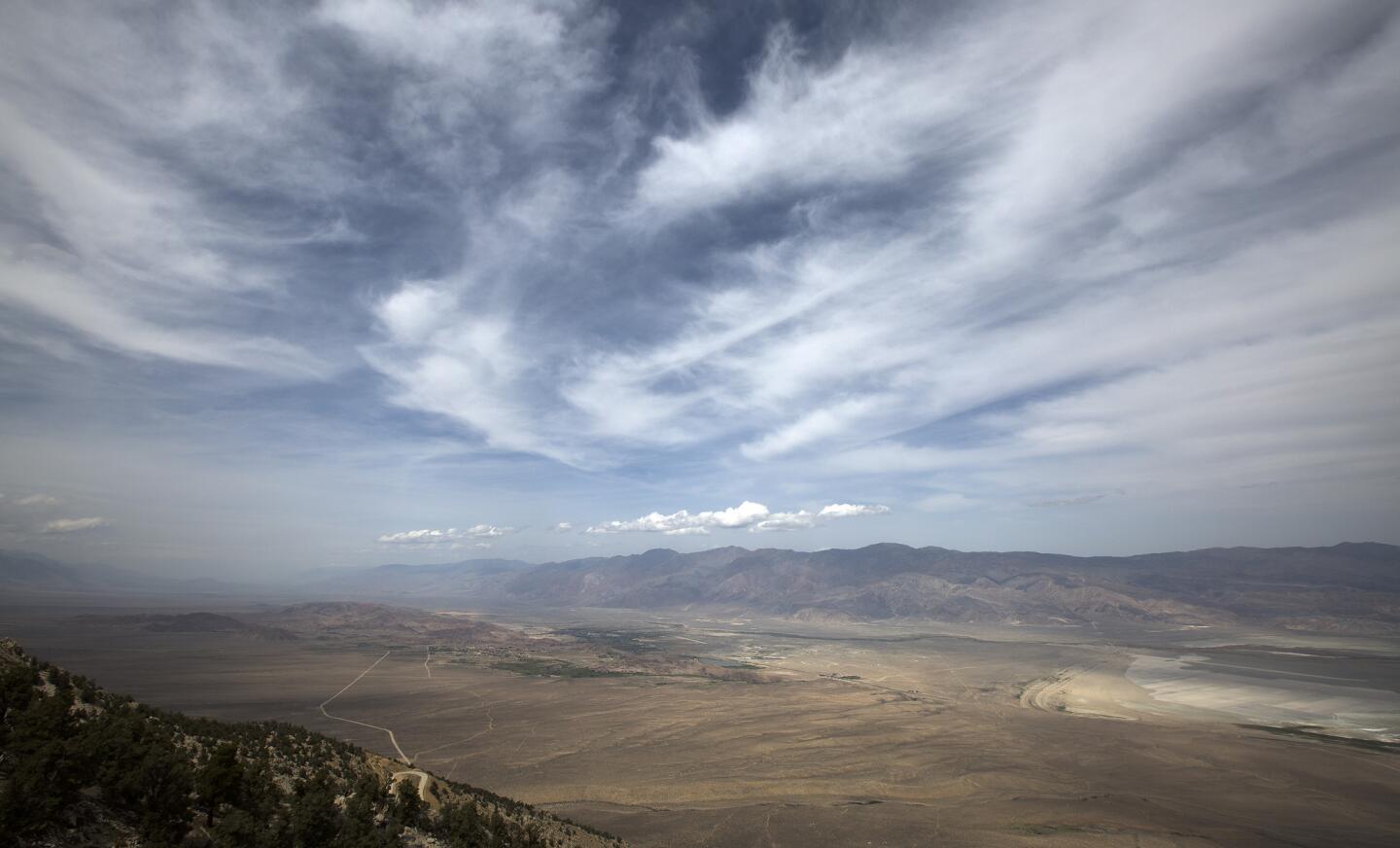
View north of the Owens Valley from high on Horseshoe Meadow Road above Lone Pine.
(Brian van der Brug / Los Angeles Times)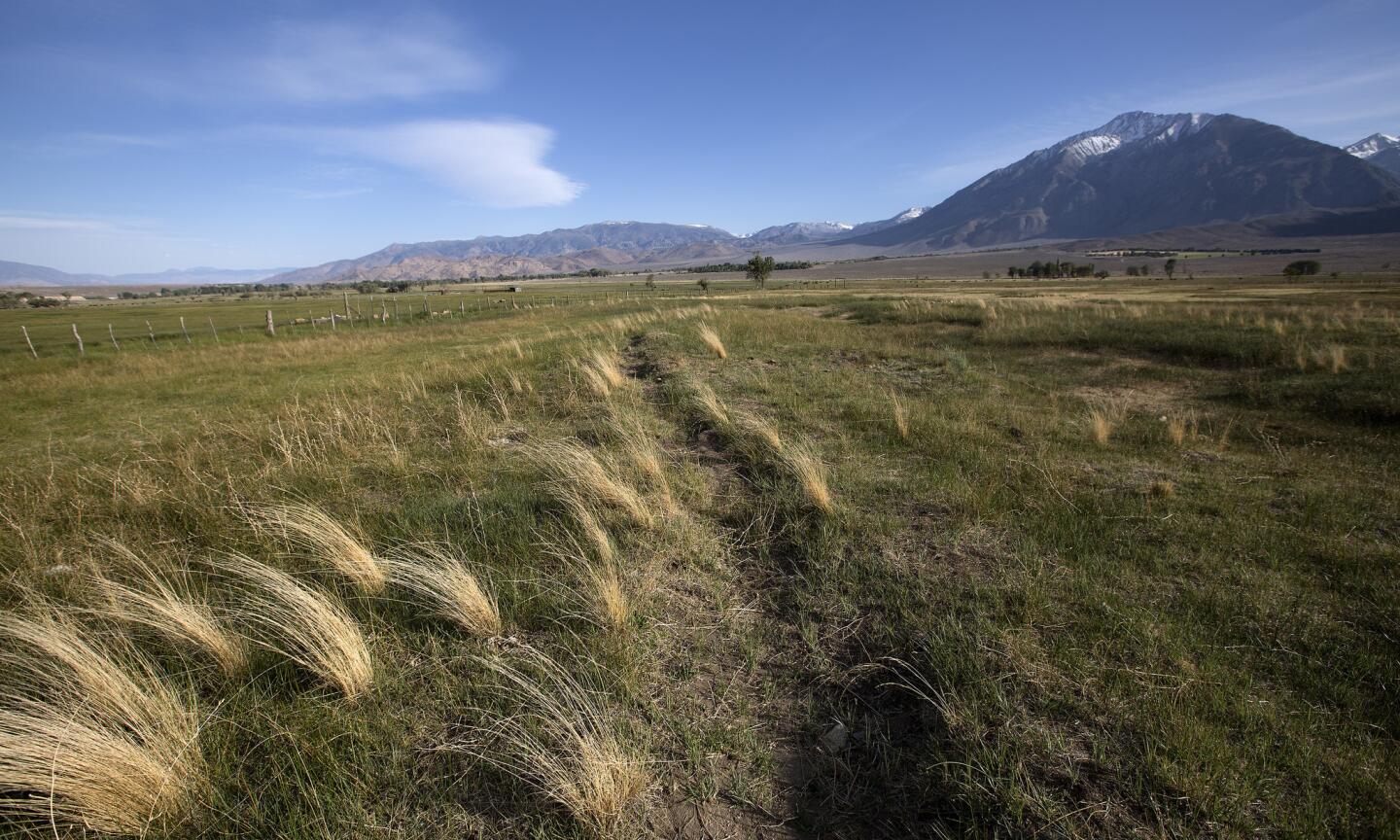
Because of the drought, LADWP water may not irrigate this field on ranch land leased by Tom and Bill Talbot in Bishop.
(Brian van der Brug / Los Angeles Times)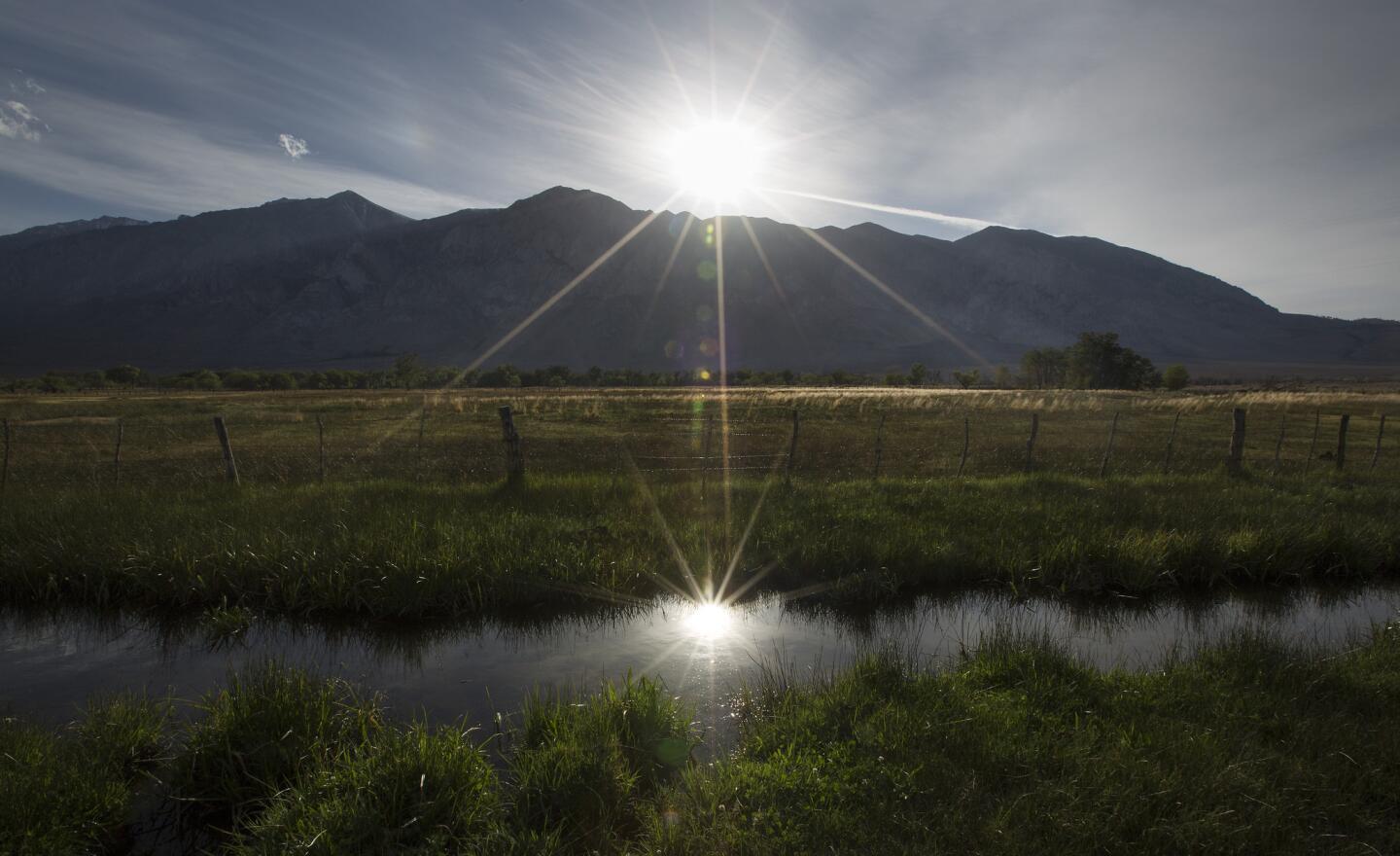
Water from Rock Creek flows to irrigate pasture on Tom and Bill Talbot’s leased ranch land near Bishop.
(Brian van der Brug / Los Angeles Times)Advertisement
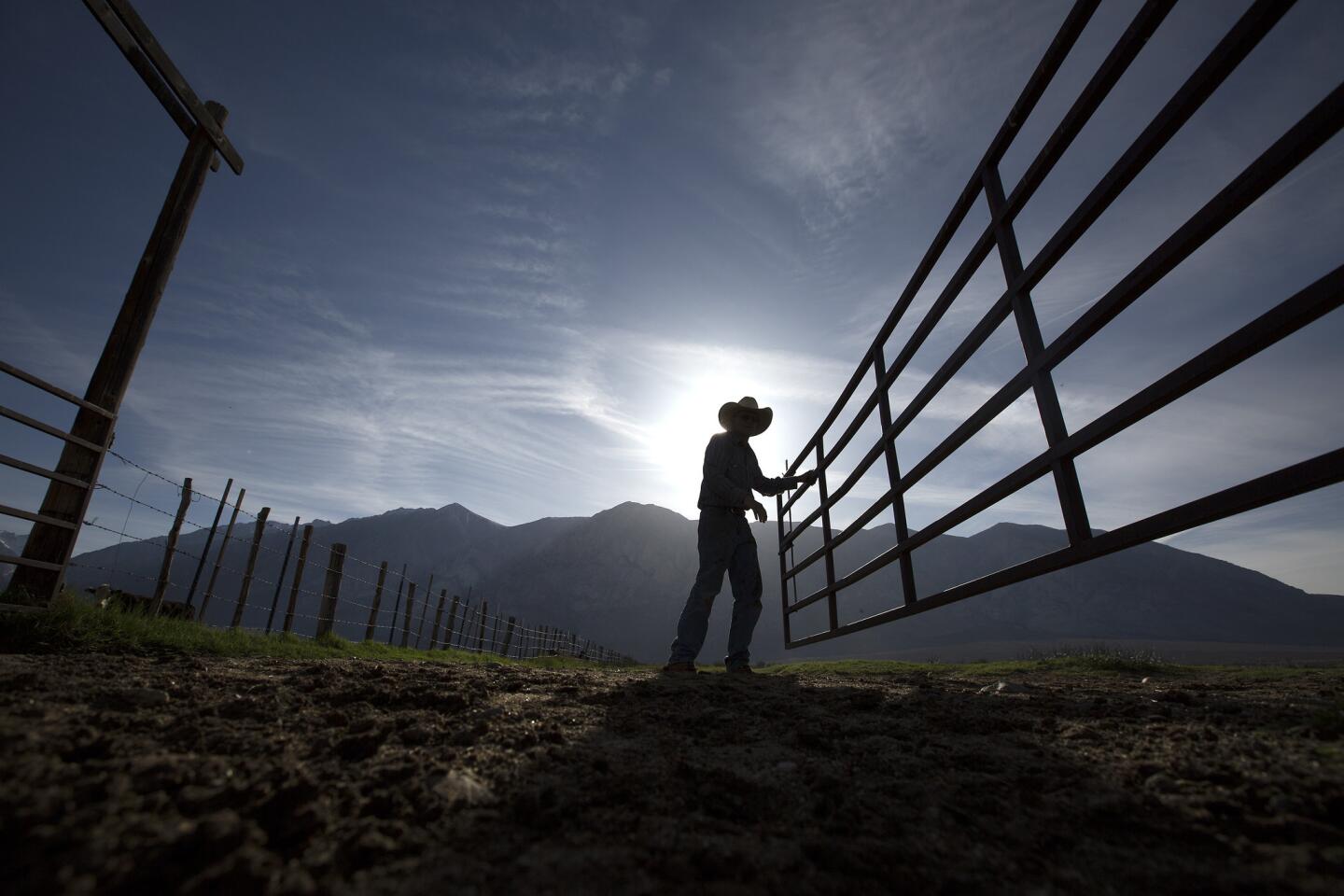
Rancher Bill Talbot opens a gate on his family’s leased ranch land near Bishop. The DWP announced plans last month to slash irrigation allotments for half of Inyo County’s 50 ranches. But that plan is on hold as ranchers and environmentalists work together on alternatives.
(Brian van der Brug / Los Angeles Times)


